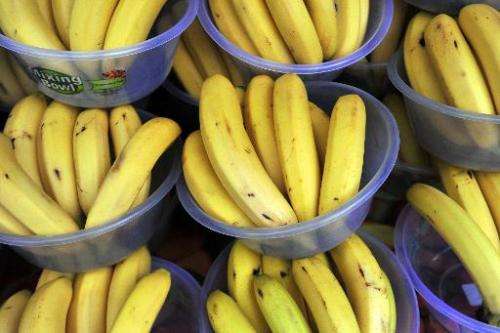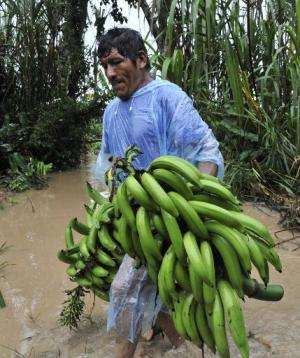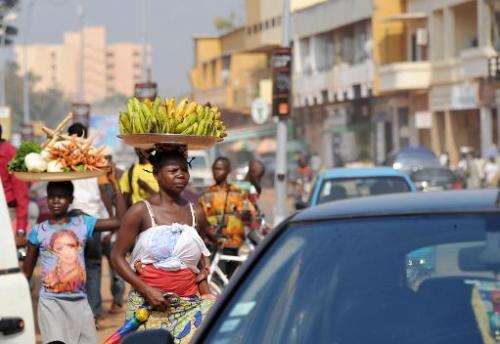Disease threatens world's bananas, says UN

The United Nations warned on Monday of the potential "massive destruction" of the world's $5.0-billion (3.6-billion euro) a year banana crop as a plant disease spreads from Asia to Africa and the Middle East.
The Rome-based Food and Agriculture Organization (FAO) said the TR4 strain of Panama disease, which has already hit tens of thousands of hectares in Southeast Asia, had been reported in Jordan and Mozambique.
The disease is "posing a serious threat to production and export" of bananas, the fourth most important food crop for the world's least developed countries and a key revenue source for poor farmers, FAO said in a report.
There is no cure for TR4, which particularly affects the Cavendish variety that accounts for 47 percent of world banana production—by far the biggest.
The disease affects the trees but not the bananas themselves and the only solution is to cut down the trees, dig trenches between trees to prevent its spread and impose strict quarantine measures.
Top producers in Latin America, including the world's main producer Ecuador, have so far not been affected but FAO warned there was a "potential" risk.
"I think it's sheer luck. It's not a question of whether it will arrive but when. There's no prevention," said Gert Kema, director of the banana research programme at Wageningen University in the Netherlands who manages the site panamadisease.org.

Kema said the availability of bananas in Europe and the United States had not been affected by the disease because their main suppliers were in Latin America and the economic impact has been focused mainly in Asia.
But he said the key problem was a "reluctance" in the industry to realise the scale of the problem and its excessive reliance on the Cavendish variety.
"The sooner we have replacements for Cavendish that are resistant to Panama the better but this is going to take years," he said, warning there was a risk of repeating mistakes made during a 1950s epidemic.
Panamadisease.org estimates the global banana crop is worth around $5.0 billion and over 100 million tonnes of bananas are traded every year, with the biggest market being the United States.
Fazil Dusunceli, a plant pathologist at FAO, was quoted as saying: "Countries need to act now if we are to avoid the worst-case scenario, which is massive destruction of much of the world's banana crop".

Gianluca Gondolini, secretary of the World Banana Forum also based at FAO, said it could hurt "employment and government revenues in many tropical countries".
In particular it would impact "regional markets" in Asia "because TR4 is heavily widespread there and this has consequences on supply and price".
The disease is soil-borne and the fungus can remain viable for decades and prevention includes foot baths and measures to avoid movement of infected soil and planting materials into and out of farms.
Gondolini said there were "preventive and quarantine measures in place but that should be strengthened".
© 2014 AFP


















